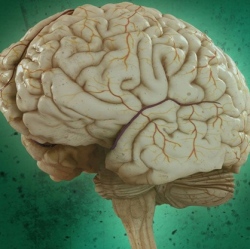
Humans surpass machines at many things, ranging from some simple pattern recognition to creative abstraction. With the help of computers, these cognitive abilities can be effectively combined into multidimensional collaborative networks that achieve what traditional problem-solving cannot.
Most of today’s human computation systems rely on sending bite-sized ‘micro-tasks’ to many individuals and then stitching together the results. For example, 165,000 volunteers in the EyeWire project have analyzed thousands of images online to help build the world’s most complete map of human retinal neurons.
This microtasking approach alone cannot address the tough challenges we face today, say the authors. A radically new approach is needed to solve "wicked problems" – those that involve many interacting systems that are constantly changing, and whose solutions have unforeseen consequences (e.g., corruption resulting from financial aid given in response to a natural disaster).
New human computation technologies can help. Recent techniques provide real-time access to crowd-based inputs, where individual contributions can be processed by a computer and sent to the next person for improvement or analysis of a different kind. This enables the construction of more flexible collaborative environments that can better address the most challenging issues.
This idea is already taking shape in several human computation projects, including YardMap.org, which was launched by the Cornell in 2012 to map global conservation efforts one parcel at a time.
"By sharing and observing practices in a map-based social network, people can begin to relate their individual efforts to the global conservation potential of living and working landscapes," says Janis Dickinson, Professor and Director of Citizen Science at the Cornell Lab of Ornithology.
YardMap allows participants to interact and build on each other’s work – something that crowdsourcing alone cannot achieve. The project serves as an important model for how such bottom-up, socially networked systems can bring about scalable changes how we manage residential landscapes.
HCI has recently set out to use crowd-power to accelerate Cornell-based Alzheimer’s disease research. WeCureAlz.com combines two successful microtasking systems into an interactive analytic pipeline that builds blood flow models of mouse brains.
The stardust@home system, which was used to search for comet dust in one million images of aerogel, is being adapted to identify stalled blood vessels, which will then be pinpointed in the brain by a modified version of the EyeWire system.
"By enabling members of the general public to play some simple online game, we expect to reduce the time to treatment discovery from decades to just a few years", says HCI director and lead author, Dr. Pietro Michelucci. "This gives an opportunity for anyone, including the tech-savvy generation of caregivers and early stage AD patients, to take the matter into their own hands."
"Human computation and machine intelligent might turn out being mutual catalysts," says Michelucci. "Either way, I don’t see machine intelligence surpassing human intelligence in the foreseeable future, but putting the two together might produce something that is more than the sum of its parts."
